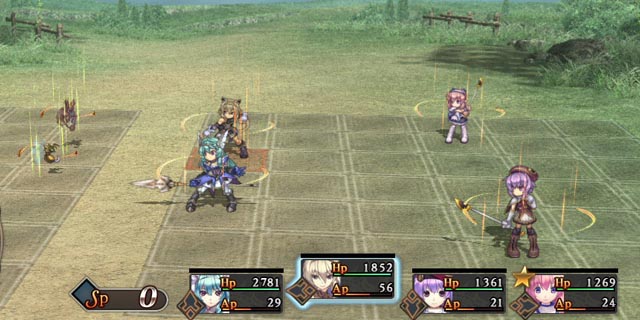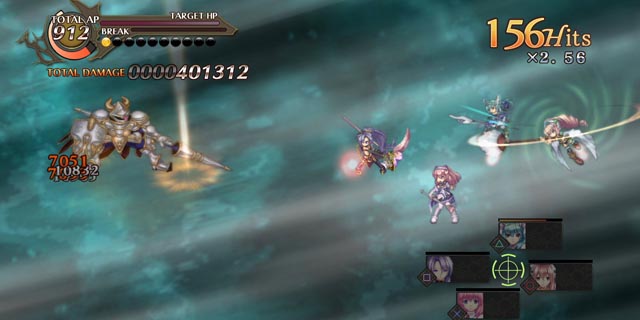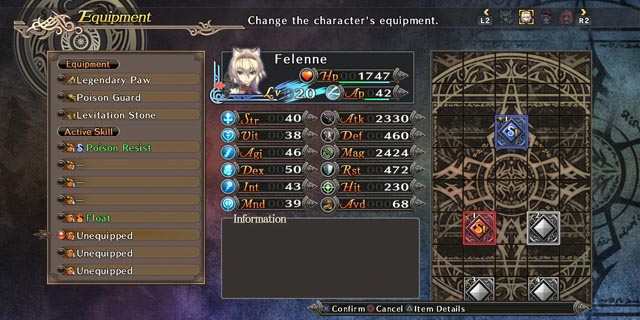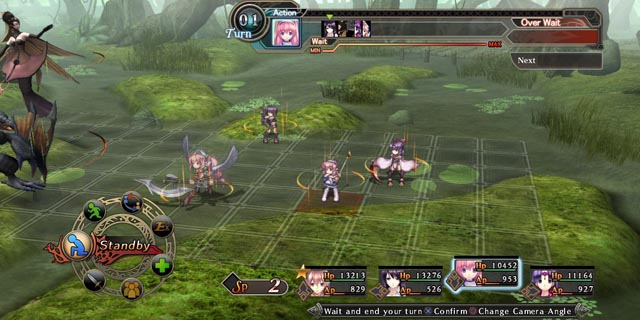
It’s tough to be a console JRPG in the West in this day and age. The genre just doesn’t hold the same industry clout that it did in the 16 and 32-bit eras. So, if nothing else, I commend Aksys for being one of the very few companies out there still dedicated to localizing these games into English. Record of Agarest War 2 is the company’s latest project, and the third title released in the series (all of which have made it to American shelves), and I’m happy we have the chance to play it.
The Record of Agarest War series is best known for taking the multi-generational birth system first introduced in Phantasy Star III and expanding upon it in a new series. That and gratuitous sex appeal, but we’ll get to that later. Basically, the selling point of the game’s mechanics is that you can plan out your future children by choosing your wife in each generation. This adds a lot more depth to the standard system of character building, and can be very powerful if orchestrated correctly by a careful player. However, it can be somewhat bothersome if you don’t put in that amount of planning, since you may have to go back and level-grind a great deal just to keep your main character’s stats in favor with the battle strategy you have chosen.

Speaking of grinding, let’s talk about the battle system and the quest system. It seems like for the better part of the last two generations, Idea Factory has been trying to craft the perfect strategy RPG battle system. Having never quite been able to strike gold with their attempts, the developers tried something different for Agarest. It’s incredibly complicated and daunting, sporting multiple points and gauges across the battle HUD, but it is certainly different, combining the combat mechanics of a turn-based system with grid-based movement. The character is not allowed to move around the grid freely, but is instead moved by their attacks.
Since the battle system is based around keeping your characters in formation, this unfortunately seems like it is punishing you for using your most powerful attacks, which do break formation. Once you break formation, you can no longer participate in multi-character attacks that turn, which are essential to a successful battle. For a great deal of the time, it felt like I was fighting the battle system more than the enemies in front of me. But once you break in the system and have it bend to your will, you can actually pull off some pretty neat strategies. You just have to study and fully comprehend every aspect of the system to do this. It’s a shame that the finer points of the battle system were not given such a front-loaded tutorial, because this is one game in which a good tutorial would have been a godsend in easing players into the mechanics.

There are many points in the game where you are required to complete a certain number of side quests to advance the main story, which brings forth the dreaded trope we know as item-grinding. As you can imagine, the layout of many of these quests follow the standard formula of “kill X monsters and get their item drop”, a structure you rarely see outside of Western RPGs and MMOs. I can’t say I’m particularly thrilled to see it here, especially considering how the game handles item drops. This is almost certainly nitpicking, but this is something that irritated me to no end when playing the quests. The only reasonable way to get an enemy’s specific item drop is to have them go into “Overkill Mode”, where you essentially have to kill the enemy twice over, the second time being on a single turn. This means you have to be much more powerful that the enemy you’re fighting, which can be very annoying for tougher, rarer monsters, entailing many hours of grinding.
This quest-based progression just doesn’t gel with a narrative-driven game. It drags down the story, and creates an awkward flow. The quest management mechanics, however, are very straightforward and well-designed. You don’t need to accept quests to start them, so if you already have met the criteria for a quest, you can already report it as completed. This certainly made the system a lot more bearable.
Agarest War 2, as expected from any Idea Factory RPG, features highly-detailed anime portraits and sprites for the characters in the game. The conversation portraits for the characters animate as they first did in Nippon Ichi/Idea Factory collaboration Trinity Universe, but the animations were improved for Agarest, incorporating more subtle movements. It still just barely falls into the uncanny valley, but it’s certainly a big step in the right direction. Surprisingly, it’s actually the 3D visuals that are the star of the show here. The backgrounds in battles and cutscenes, all of which are rendered in 3D, are detailed, vibrant, and aesthetically consistent. It’s really refreshing to see, and shows that the developers weren’t simply copy-pasting the anime aesthetic wholesale.

The monster designs are also visually interesting and just as detailed as the backgrounds. There are really only two flaws that I can see with the visual presentation. First, although the character battle sprites are detailed and fluidly-animated, they are still shown at an oddly-low resolution; it looks like someone smeared Vaseline over proper HD sprites. It’s a strange and confusing dynamic that sticks out like a sore thumb when put up against the rest of the game. Second, for some reason, the game tends to chug when these sprites animate, especially during the loading of the beginning of a battle, dropping to a jarring low framerate for a few seconds. There really should be no reason for this happening; there is nothing terribly visually complex going on, so I can only imagine this can be chalked up to poor use of the game engine. The soundtrack is nothing to write home about; standard JRPG fare in every sense of the word, heavily utilizing synth, keyboards, and horns to compose the adventurous tunes of every RPG you’ve ever played.
If nothing else, the Agarest series has been known for its gratuitous use of sex appeal as a marketing tool. It’s certainly nothing new for any form of mass media, but the sheer bombast by which the series does so has raised a few eyebrows. Yes, the locus of the game’s character design is clearly on attractive women. One could argue that said sex appeal is seen in both sexes for the game, as the men in the game are pretty easy on the eyes, but this doesn’t really hold water under any degree of scrutiny, given the game’s heterosexual-male-focused marketing.
Agarest 2 is a game for those who really, really love JRPGs, flaws and all. If that person is you, then I’m pretty sure you will love the game. If not, then you probably shouldn’t bother. The story is as archetypal as you can possibly get for the genre, and whether that is good or bad relies on your personal taste. It really is one of those situations where you can predict the entire story, scene by scene, based on available tropes. The characters are no different, using your standard roles such as the goofy sidekick, a bunch of demure young girls, an ice queen and whatever else can be pulled out of the grab bag.
It’s unfortunate that the battle system of Agarest 2 was so poorly handled; with a better tutorial, less grinding and maybe a free movement option, it could have been something quite novel and engaging, but as it stands, there isn’t a whole lot to carry it, and even less to draw new players in with its combat mechanics. The lag in battles is also troubling, but is less of an issue. But, despite all these flaws, I can still see the appeal in Record of Agarest War 2. If you are a huge fan of the genre and need something to sink your teeth into, you could do worse than this game. You can probably do much better, too.
Pros: Excellent 2D art and 3D models, lots of play time
Cons: Confusing battle system, unoriginal story, too much grinding



















